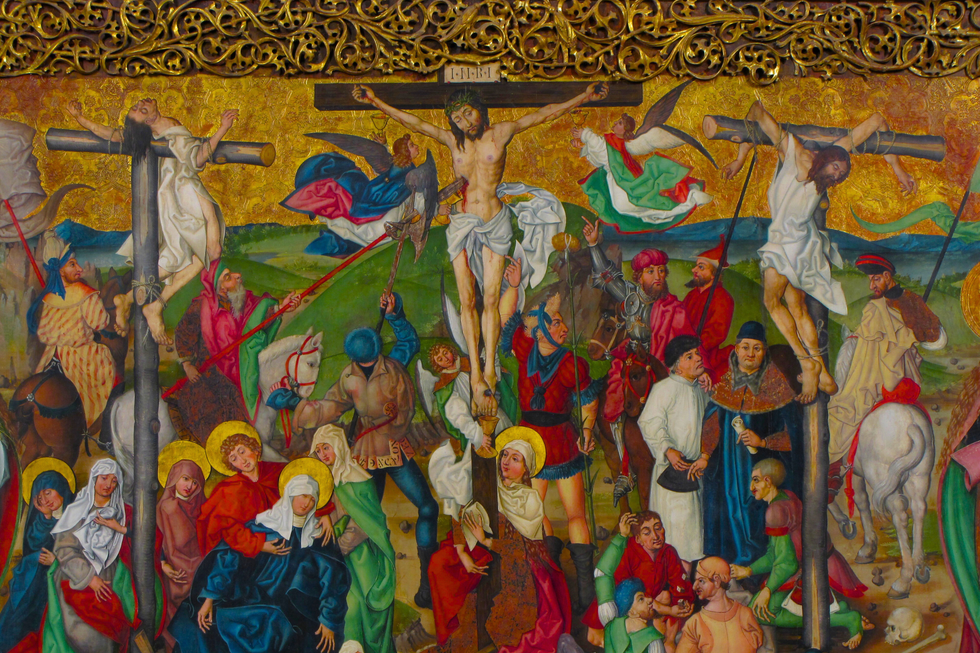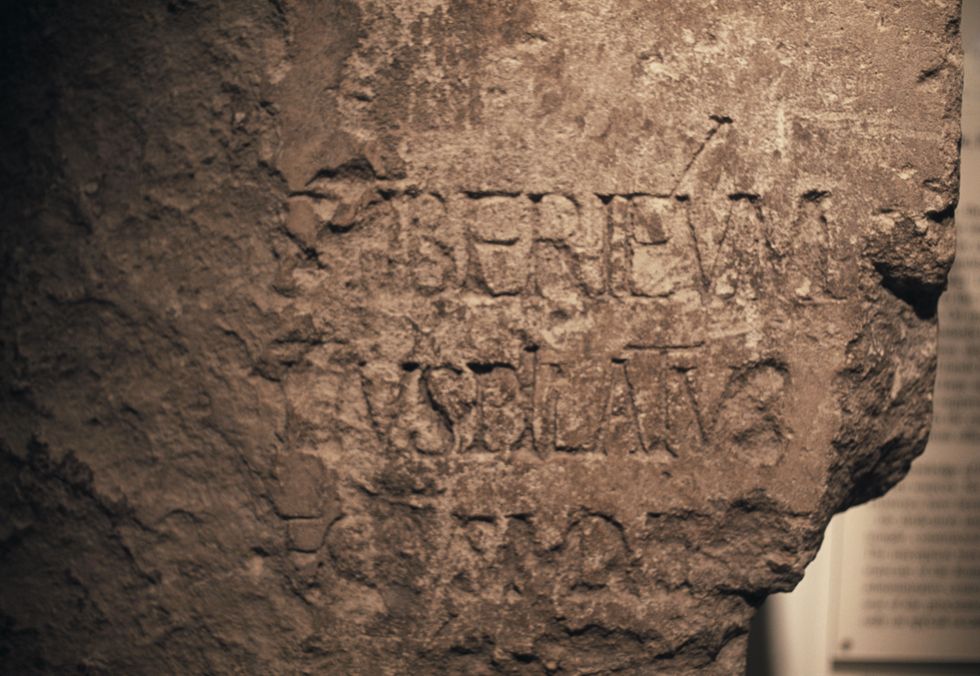'Exact time of Christ's crucifixion' is revealed in extraordinary new study

Real-life events like a partial lunar eclipse have helped one author to develop the bombshell theory
Don't Miss
Most Read
The "exact time" of Christ's crucifixion has been revealed, a bombshell new book has claimed.
Author Woodrow Michael Kroll says he has assembled definitive proof that Jesus Christ died at precisely 3pm on Friday, April 3, 33 AD.
"The Day Jesus Died" draws upon multiple disciplines to establish the exact moment, combining painstaking biblical analysis with historiography, astronomy and archaeology.
The work examines Gospel accounts alongside ancient Jewish timekeeping methods - as well as astronomical calculations and physical evidence from first-century Roman Palestine.
TRENDING
Stories
Videos
Your Say
Mr Kroll also takes into account prophecies from the Old Testament Book of Daniel, non-Christian historical sources, and artefacts including the Pilate Stone, unearthed in 1961.
The author maintains that these diverse strands of evidence converge to support a single, precise time and date for Christianity's most significant event.
The biblical texts provide specific "temporal markers" that the book analyses to establish a chronology.
Mark's Gospel records Christ's death occurring at the "ninth hour", which corresponds to 3pm under the ancient Jewish system that began counting daylight hours from approximately 6am.

PICTURED: Crucifixion, from the Buhl Altarpiece, a particularly large Gothic oil on panel painting from the 1490s. Author Woodrow Michael Kroll says he has assembled definitive proof that Jesus Christ died at precisely 3pm on Friday, April 3, 33 AD
|PUBLIC DOMAIN
All four Gospel accounts place the crucifixion on the "Day of Preparation", the period preceding the Jewish Sabbath which commences at Friday sunset.
The author demonstrates how this timing aligns with Passover observances, noting that Christ's death fell at 3pm on Nisan 14, the day on which the Passover sacrifice was offered in ancient times.
Scripture describes also supernatural darkness enveloping the region from midday until 3pm.
And Mr Kroll's astronomical research reveals that a full moon appropriate for Passover appeared over Jerusalem on 3 April, 33 AD, with a partial lunar eclipse occurring that evening.
BIBLICAL BREAKTHROUGHS - READ MORE:

Mr Kroll also takes into account artefacts including the Pilate Stone, unearthed in 1961 - which proves Pontius Pilate was real
|GETTY
The moon's reddish appearance corresponds with Peter's description in Acts of "the moon turning to blood".
Roman governor Pontius Pilate, whose authority in Judea spanned 26 to 36 AD, presided over Christ's trial during a period of political uncertainty following his patron Sejanus's downfall in 31 AD.
Archaeological findings strengthen the historical framework for Mr Kroll's claims - including the Pilate Stone validating the governor's existence and a crucified individual's heelbone from 1968 displaying wounds consistent with a Roman execution.
Non-Christian historians Phlegon and Thallus documented unusual darkness at midday and seismic activity during the 202nd Olympiad, a four-year span concluding in 33 AD, corroborating descriptions in the Gospel.
The author has also thrown out suggestions of a Wednesday crucifixion, arguing this contradicts Gospel accounts and first-century Jewish practices regarding the Sabbath.
He has vowed that Christ's entombment before Friday sunset and resurrection on Sunday fulfils Matthew's prophecy of three days and nights.
"Based on eyewitness, historical, and literary accounts, readers can pinpoint the hour Jesus said: 'It is finished'. It's almost like being there," Mr Kroll writes.










